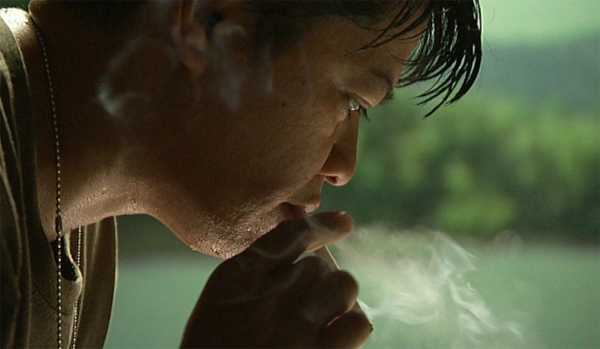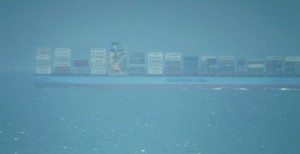Is gender the new frontier? Continuing with their contemporary ABC the Moving_Image cycle at the Gaîté Lyrique this time presented ‘G comme Gender’ (G for Gender). The films screened questioned dichotomous views of gender, showing just how easily that line can be blurred.

Opening with performance artist Marina Abramovic and collaborator Ulay’s Imponderabilia, the early work features the two performers standing naked across from each other in front of a museum door as their audience is forced to pass between them. The camera captures some of them looking embarrassed, some not acknowledging their presence at all and others resting on the artists’ shoulders. By positioning this nudity in the unusual environment of a museum, Imponderabilia questions our levels of comfort with the naked body and the primal nature of our existence, suppressed by social norms on an everyday basis.
If this conformism requires that we present ourselves in a certain way, then clothing is the ultimate manifestation of that. Personae, by German artist Jakob Gautel, examines this very notion. A collage of self-portraits of himself being dressed in every possible outfit –from Adam’s suit to a suit and tie, S&M wear to an Indian sarong –the photos move so fast that it ends up being a generic image that offers no time to characterise the person by what he is wearing. Gaudel’s intention was to portray the many facades of our identity through clothing, which is the principal way of expressing our individuality, at the same time as restricting and suppressing our idiosyncrasies.
Finally, the importance of gender identity is questioned by two films that reverse those roles and mess around with any preconceived notions of perpetuated by well-known films, such as Coppola’s Apocalypse Now and Michael Fassbinder’s Garbage, the City and Death. In After Apocalypse Now: Martin Sheen (The Soldier) by Cabello/Carceller, the eponymous role of the actor is played by a Philipino woman in the same setting that the original Apocalypse Now was shot. The film questions post-colonial identities and how the filmmaker used the Philippines as a substitute for Vietnam and Cambodia, thus, reducing its unique identity to a ‘generic Asia’ for a Western audience. In the same way, by using a woman to play the iconic male lead, it questions the significance of gendered representation and how definitive it is.

Building on that idea, Mariah Garnett’s Garbage, the City and Death, uses scenes from Fassbinder’s homonymous play as a platform for her to examine the tension between her and her real life half-sister. The two characters, Roma, a prostitute, and her pimp boyfriend Franz, have quarrels about money and their relationship deteriorates as the film progresses. The fraternal relationship is seen through the prism of a lover’s quarrel, by doing so the not-so-definitive nature of sexuality is explored and most of all, our perception of it is put to the test.
Moving_Image: A Contemporary ABC is a monthly screening session running at Gaîté Lyrique in Paris.






















